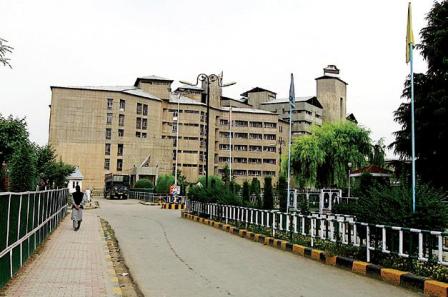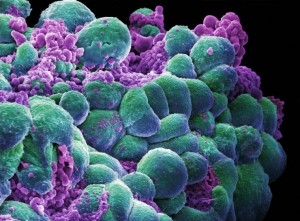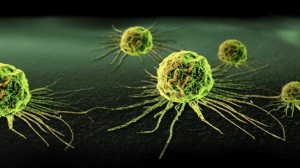Blog Archives
Men ‘more vulnerable’ to skin cancer
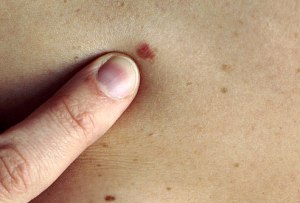 Far more men than women are dying from skin cancer, despite similar numbers being diagnosed with the disease, a report suggests.
Far more men than women are dying from skin cancer, despite similar numbers being diagnosed with the disease, a report suggests.
Cancer Research UK said each year, the most serious type of skin cancer, malignant melanoma, kills 1,300 men and 900 women, a gap expected to widen.
A reason could be men delaying seeking help, but biology may also play a part.
Prof Julia Newton-Bishop, a Cancer Research UK dermatologist, suspects women have stronger immune systems.
German researchers have already identified a gene that appears to make men, but not women, more susceptible to melanoma.
Prof Newton-Bishop, from the University of Leeds, said: “Research has suggested the difference between the sexes could be in part because men are more likely to be diagnosed when melanoma is at a more advanced stage.
“But there also seem to be strong biological reasons behind the differences, and we’re working on research to better understand why men and women’s bodies deal with their melanomas in different ways.
“Stage for stage, men do less well with this cancer so there’s something very important that this is telling us about how the body deals it.
“We think it is something to do with the immune system rather than hormones because pre- and post-menopausal fare the same.”
Delayed diagnosis
Another concern is late diagnosis.
Men, unlike women, more often develop the cancer on their back rather than arms and legs which may make it more difficult for them to spot.
“Asking your partner to check your back is a good idea,” said Prof Newton-Bishop.
Malignant melanoma death rates have been increasing in the UK since the early 1970s, largely because more people are developing the disease.
Male incidence rates are now more than five times higher than they were 30 years ago – rising from 2.7 per 100,000 to 17.2 per 100,000.
Getting too much sun and using sun beds increases the risk of this largely preventable disease.
To protect their skin, people are advised to use a sunscreen with at least SPF15 and good UVA protection – the higher the star rating, the better – and to be aware of changes in the skin, including a new growth or a spot or mole that itches, hurts, bleeds or will not heal.
Treatment is more likely to be successful if melanoma is spotted early.
Raw garlic can halve lung cancer risk: Study
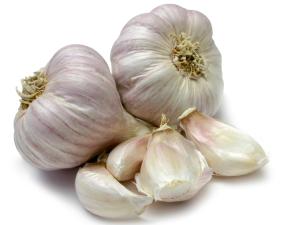 London: Eating raw garlic twice a week can nearly halve the risk of developing lung cancer, even lowering the danger for smokers, a new study has claimed.
London: Eating raw garlic twice a week can nearly halve the risk of developing lung cancer, even lowering the danger for smokers, a new study has claimed.
Chinese researchers found that those who consumed raw garlic as part of their diet were 44 per cent less likely to suffer the disease.
Even when they allowed for whether people smoked – the biggest single cause of lung cancer, the scientists found garlic still seemed to reduce the dangers by around 30 per cent, the `Telegraph` reported.
Previous research has suggested that the popular herb can ward off stomach cancer and colon cancer, and a study at the University of South Australia suggested that it could reduce the risk of bowel tumours by nearly a third.
Scientists at Jiangsu Provincial Centre for Disease Control and Prevention compared 1,424 lung cancer patients with 4,500 healthy adults.
They found that those who ate raw garlic at least twice a week were significantly less likely to get lung cancer, even if they smoked or were exposed to high-temperature cooking oil fumes, which is thought to be another trigger for the disease.
The key ingredient behind this effect seems to be a chemical called allicin, released when the clove is crushed or chopped, according to previous studies.
It is thought to dampen down inflammation in the body and act as an anti-oxidant, reducing damage from so-called free radicals to the body`s cells.
However, it is not clear whether cooked garlic would have the same effect.
“Garlic may potentially serve as a preventive agent for lung cancer,” researchers said.
The study was published in the journal Cancer Prevention Research.
New immunity-boosting drug helps body kill cancer
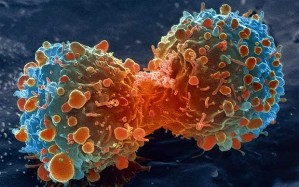 A new type of drug that “revs up” the immune system to destroy cancer is being tested on humans for the first time. Scientists at the University of Southampton have developed the treatment in an attempt to tackle cancers, such as those of the pancreas, head and neck, that are particularly hard to deal with using available techniques.
A new type of drug that “revs up” the immune system to destroy cancer is being tested on humans for the first time. Scientists at the University of Southampton have developed the treatment in an attempt to tackle cancers, such as those of the pancreas, head and neck, that are particularly hard to deal with using available techniques.
The new drug works by increasing the ability of the immune system to recognise and attack tumours.
Recent research has suggested that many cancers can switch off immune cells, leaving them unable to follow their natural course of attacking the tumour and stopping its growth.
The new drug, which is called ChiLob 7/4, turns these cells back on and increases their numbers. By giving patients a vaccine at the same time that can train these immune cells to target cancer, doctors say they can focus the immune system’s attacks on the tumour.
A trial of 26 patients with pancreatic cancer has already shown encouraging results and now the scientists are to start a £5 million European Union funded trial of the new treatment next year.
Prof Martin Glennie, a cancer specialist who has led the research at the University of Southampton, said: “What we are finding is there are a whole spectrum of receptors on immune cells that switch them on and off.
“Some cancers are able to switch the immune cells off. We have been working on a drug that effectively puts the foot on the accelerator to rev up the immune system.
“If we use this with a vaccine we can steer the immune cells and train them to target the cancer.”
The drug is the latest in an emerging field of cancer treatment known as immunotherapy that attempts to exploit the patient’s own immune system to tackle tumours rather than relying upon chemotherapy or radiotherapy to kill the cancer cells.
So far one cancer immunotherapy has been approved for use in patients.
Called Ipilimumab, it effectively reverses the dampening effect of cancer cells on the immune system by switching it back on and has been approved for use against melanoma, a form of skin cancer.
The University of Southampton is now establishing a dedicated Cancer Immunotherapy Centre to carry out research on more of these drugs.
Already scientists there are working on a number of other compounds like ChiLob7-4 that can target cancer in this way.
Professor Glennie said: “Ipilimumab works a bit taking the brakes off part of the immune system called T cells, while our compound revs up the T cells – it is like giving them a caffeine hit.
“We believe this could provide us with some quite wide spectrum treatments, unlike many of the new cancer drugs which are for specific cancers and even individuals. This makes them very expensive.
“We believe many cancers have immune cells in them that are trying to react against the tumour but have been switched off. So if we turn them back on then they should destroy the cancer, especially when used in combination with other treatments.”
Professor Glennie said he hoped ChiLob7-4 could start being used widely in patients within the next five years if the clinical trials are successful.
Pancreatic cancer affects around 9,000 people in the UK each year and has extremely low survival rates – less than four per cent of patients survive for longer than five years.
He added: “We know from our phase one trials that it produces symptoms like the flu, but this is relatively mild compared to the side effects of chemotherapy and disappears once the antibodies have gone away.
“We think these kind of drugs could be particularly useful in difficult to treat cancers but potentially could be used in all cancers.”
Dogs can sniff out cancer with 100 per cent accuracy: report
 Washington: Woman’s best friend! Researchers have trained dogs to sniff out the signature chemical compound that indicates the presence of ovarian cancer with 100 per cent accuracy.
Washington: Woman’s best friend! Researchers have trained dogs to sniff out the signature chemical compound that indicates the presence of ovarian cancer with 100 per cent accuracy.
Ohlin Frank, a trained chocolate Labrador has been able to detect ovarian cancer tissue 100 per cent of the time, researchers said. Frank and its fellow trainee, McBaine Chamberlain, a spunky springer spaniel, are a part of an interdisciplinary research project at the University of Pennsylvania to help scientists discover a chemical footprint that might lead to earlier diagnostic tests to save human lives. They are among 15 carefully bred detection dogs learning to sniff out explosives, drugs and missing people.
Researchers are using the keen sense of smell of the dogs to identify the earliest odour of ovarian cancer, a silent killer often diagnosed too late, ‘ABCNews.com’ reported.
Cancer cells leave a detectable bio-marker, just as asparagus can affect the smell of urine when eaten.
Penn Vet founder and executive director Cynthia M Otto hopes the dogs can be trained to narrow down a specific odour within two years, so scientists can design an inexpensive and less-invasive blood test to catch ovarian cancer while it’s still treatable.
“All dogs are really good at sniffing, but part of what gives them a huge advantage over us is the surface area of the olfactory receptors,” Otto said.
The dogs have already been introduced to the cancer tissue smell and were taught to sit when they found it.
Otto’s work builds on a 2010 Swedish study, which used pet giant schnauzers to detect ovarian cancer. Tissue tests showed sensitivity of 100 per cent and specificity of 95 per cent; blood tests showed sensitivity of 100 per cent and specificity of 98 per cent, the report said.
Dogs with long noses have the largest surface areas of olfactory receptors, said researchers.
Oxeta Update: Lycopene May Reduce the Risk of Colorectal Cancer
 Many health organizations recommend eating more produce for colorectal cancer protection, but the mechanism for its disease-fighting ability is less well understood. Fruits and vegetables are rich in fiber and antioxidants – compounds that protect cells – and scientists have suspected that both play a role. Researchers from Stuttgart, Germany looked the relationship of three antioxidants – lycopene, beta-carotene, and alpha-tocopherol – and their association with colorectal adenomas, growths that are possibly precancerous.
Many health organizations recommend eating more produce for colorectal cancer protection, but the mechanism for its disease-fighting ability is less well understood. Fruits and vegetables are rich in fiber and antioxidants – compounds that protect cells – and scientists have suspected that both play a role. Researchers from Stuttgart, Germany looked the relationship of three antioxidants – lycopene, beta-carotene, and alpha-tocopherol – and their association with colorectal adenomas, growths that are possibly precancerous.
The 165 volunteers were part of a larger study of lifestyle habits and colorectal adenomas. All had a recent colonoscopy to evaluate hidden blood in the stool, but were otherwise healthy, with no prior personal or family history of colorectal cancer or polyps. Polyps discovered during the colonoscopy exam were removed and classified as adenomatous – growths that might turn cancerous if not removed – or hyperplastic, which tend to be smaller and are thought to be unlikely to ever develop into cancer. A nutritionist questioned the volunteers about their diets, including consumption of alcoholic beverages, and other habits. Blood samples were measured for levels of lycopene, beta-carotene, and alpha-tocopherol. The investigators looked for relationships between blood levels of the antioxidants and colorectal growths.
Low blood levels of lycopene and smoking were both associated with an increased risk for adenomas, after other factors were ruled out that can influence colorectal cancer risk, such as age, body fat, and gender. There was no relationship between the presence of adenomas and levels of beta-carotene and alpha-tocopherol.
Lycopene is concentrated in tomatoes and tomato products. The researchers concluded that lycopene is in part responsible for the protective effect high tomato intake has against the risk of colorectal adenomas. Other studies have shown that beta-carotene and alpha-tocopherol have a healthful influence too, but this study does not substantiate that. Lycopene appears to protect cells from the damage caused by free radicals, which are by-products from the body’s oxygen use and also a result of exposure to cigarette smoke and excessive sunlight.
Besides tomatoes and tomato products, other lycopene-rich foods include watermelon, pink grapefruit, pink guava, and papaya. Include these foods in your daily mix of fruits and vegetables. The American Cancer Society recommends at least five servings of produce a day. Another lifestyle choice, which consistently proves beneficial – as in this study – is not to smoke.
SKIMS starts Cancer Fund for poor patients
Srinagar, July 1: Kashmir’s sole tertiary-care specialty, the SK Institute of Medical Sciences (SKIMS), Soura has started a fund-raising bank account for free treatment of cancer patients.
The SKIMS authorities Monday “appealed philanthropists and civil society members of Jammu and Kashmir to contribute towards the poor patients suffering from cancer by depositing donations (Zakat, Sadqat) in the account number SB-15060 J&K Bank at SKIMS Soura branch.”
“The institute has created the SKIMS Endowment Fund approved by its governing body on July 6, 2010. All those who require financial assistance will be provided assistance under this fund,” the SKIMS PRO Sanna Kulsoom said in statement.
“Under this fund the financial assistance will be provided to the people living below poverty line and falling under the low income group,” she said.
According to the statement, “cancer is treatable if diagnosed early through proper management which includes surgery, radio- therapy or a combination of these regimens.”
“It involves huge expenditures beyond the means of patients who come from modest economic backgrounds. So, the institute provides free drugs and diagnostic facility to patients out of the amount placed at the disposal of Director SKIMS, from Prime Minister’s and Chief Ministers Fund,” the statement added.
Now talcum powder linked to ovarian cancer!
 London: A new research has suggested women regularly using talcum powder to keep fresh actually increase their risk of developing ovarian cancer by almost a quarter.
London: A new research has suggested women regularly using talcum powder to keep fresh actually increase their risk of developing ovarian cancer by almost a quarter.
Scientists have warned powder particles applied to the genital area can travel into a woman`s body and trigger inflammation, which allows cancer cells to flourish, Daily Mail reported.
In the past, several studies investigated the link between the powder and tumours. Some detected links with ovarian and womb cancer but others proved inconclusive. But the doctors at Brigham and Women`s Hospital in Boston, US, pooled data from eight separate studies to try and come up with a definitive answer.
For the study, researchers analysed data from 8,525 women diagnosed with ovarian cancer and compared talcum powder use with that of 9,800 women who remained cancer-free.
The results, published in the journal Cancer Prevention Research, showed regularly applying the powder particles after bathing or showering raised the risk of an ovarian tumour by 24 per cent.
Cancer of the ovaries is sometimes known as a “silent killer” as for many victims symptoms only appear when it has already fairly advanced.
Indian doctors develop low-cost screening for cervical cancer
MUMBAI: Tata Memorial Centre, a premier cancer treatment institute in the country, today announced that its researchers have found an inexpensive way to screen for cervical cancer — the most common cancer among Indian women — which can prevent 72,600 deaths worldwide each year.
The procedure, involving use of vinegar, curbed the deaths caused by the cancer by 31 percent in a group of 1.5 lakh women, it said. Cancer of the uterine cervix is the most common cancer affecting Indian women with an estimated 142,000 new cases coming to light every year and 77,000 women dying of the disease, a TMC spokesperson said here today. “India accounts for one-third of the global burden of cervical cancer. The disease is caused by infection with a virus called human papilloma virus (HPV) and is related to poor genital hygiene. “The disease develops slowly and most women experience no symptoms until it reaches advanced stages when treatment is often unsuccessful. Cervical cancer is preventable if the disease is detected at early and treated in time. “Cervical cancer incidence declined dramatically in high- income countries after introduction of organised population-based screening programmes using cervical cytology (Pap smear test),” he said.
“However, in India, a national population-based Pap smear screening programme is difficult to implement because of logistic problems related to need for laboratory facilities and expert cytologists.” Visual inspection of the cervix after application of 4 per cent acetic acid (VIA) is a low-cost alternative, he said. However, efficacy of VIA test, conducted by trained health workers, was yet to be ascertained. So Tata Memorial Centre embarked on this research; funds were provided by National Cancer Institute, USA, supplemented by TMC and Women’s Cancer Initiative, Mumbai.
The study involved 150,000 women in the age group of 35-65, living in “relatively low socio-economic settings in 20 clusters in Mumbai suburbs”, TMC spokesperson said, adding that participation was entirely voluntary.
The researchers divided the participants into two groups: 75,000 women living in 10 clusters were allocated to the `screening group’ while another 75,000 women were allocated to the `control group’. Women in the `screening group’ were invited to a cancer education programme followed by VIA test. This group received four rounds of screening and cancer education every two years. Women in the `control group’ did not receive the VIA test but were given cancer education. They were also asked to report to TMC in case they experienced any symptoms suggestive of cervical cancer.
According to TMC, results showed that VIA screening is safe, feasible and “acceptable to Indian women”, as there was an “overwhelming participation”. “The study data recorded at the completion of 12 years show that cervical cancers were detected significantly early among the screening group….There was 31 per cent reduction in death-rate from cervical cancer in the screening group compared to the control group. Many more `pre-cancers’ were also detected in the screening group and were treated, indicating that these women are unlikely to get cervical cancer in future,” the spokesperson added.
VIA test can prevent 22,000 cervical cancer deaths in India and 72,600 deaths in “resource-poor” countries world-wide annually, TMC says. The results of the study were announced at the annual meeting of American Society of Clinical Oncology, underway in Chicago.
Cancers can be prevented before they develop, says Indian-origin scientist
Scientists, including one of Indian-origin, have uncovered a survival mechanism that occurs in breast cells that have just turned premalignant – cells on the cusp between normalcy and cancers – which may lead to new methods of stopping tumours.
The Salk Institute researchers found that a protein known as transforming growth factor beta (TGF-beta), considered a tumour suppressor in early cancer development, can actually promote cancer once a cell drifts into a pre-cancerous state.
The surprising discovery raises the tantalising possibility that, with novel treatment, some cancers might be prevented before they even develop, researchers said.
“Our work suggests it might be possible to halt cancer development in premalignant cells-those that are just a few divisions away from being normal,” said the study’s lead author, Fernando Lopez-Diaz, a researcher in the Regulatory Biology Laboratory at Salk.
“This study offers both significant insights into early cancer development and a new direction to explore in cancer treatment. It would be fantastic if a single agent could shut down both advanced cancer and cancer that is primed to develop,” said Beverly M Emerson, study’s senior author.
The researchers conducted this study to learn exactly how p53, a known tumour suppressor, and TGF-beta interact in cancer development.
The team examined premalignant as well as cancer cells from breast and lung tumours and matched normal and premalignant breast cells from healthy women provided by scientists at the University of California San Francisco.
They found that TGF-beta can interfere with cells’ damage responses in premalignant or cancer cells. They found that TGF-beta halts both the transcription of the p53 gene – the process by which cellular machinery reads the DNA code for a gene – and the subsequent process by which the corresponding p53 protein is produced, known as translation.
Too Much Sleep May Up Colon Cancer Risk
Long sleep duration is associated with an increased risk of colorectal cancer, especially among people who snore and are overweight, researchers reported.
In analysis of two long-running prospective observational cohorts, people who reported sleeping at least 9 hours a night were more likely to develop the disease than those who slept an average of 7 hours, according to Xuehong Zhang, MD, ScD, of Harvard Medical School, and colleagues.
But the association was restricted to people who either snored regularly or were overweight, Zhang and colleagues reported in the May issue of Sleep.
There has been little study of potential links between sleep and cancer incidence, although there is some evidence that hypoxemia might play a role, the researchers noted.
The study “adds to the very limited literature regarding the relationship between sleep duration and/or sleep quality and colorectal cancer risk,” Zhang said in a statement.
And the “novel observation” that regular snorers who sleep for long periods appear to have an increased risk “raises the possibility that sleep apnea and its attendant intermittent hypoxemia may contribute to cancer risk,” Zhang said.
The findings are based on analysis of colorectal cancer incidence among 30,121 men ages 41 to 79 in the Health Professionals Follow-up Study, and 76,368 women ages 40 to 73 in the Nurses’ Health Study.
In both studies, participants were asked about sleep duration and snoring in 1986 and 1987. In addition, the long-running studies collect data on demographics, lifestyle, and disease.
Over 22 years of follow-up, Zhang and colleagues reported, there were 1,973 incident colorectal cancer cases, including 709 among men and 1,264 among women.
Compared with people who slept 7 hours nightly on average, those who slept 9 or more appeared to be more likely to develop colorectal cancer: For men, the hazard ratio was 1.35 (95% CI 1.00 to 1.82), while for women it was 1.11 (95% CI 0.85 to 1.44).
But when the analysis was stratified by snoring or body mass index greater than 25, the association became stronger, Zhang and colleagues reported. Specifically:
- In long-sleeping men who snored, the hazard ratio for colorectal cancer was 1.80 (95% CI 1.14 to 2.84)
- In long-sleeping women who snored, the hazard ratio was 2.32 (95% CI 1.24 to 4.36)
- In overweight men, the hazard ratio was 1.52 (95% CI 1.04 to 2.21)
- In overweight women, the hazard ratio was 1.37 (95% CI 0.97 to 1.94)
Short sleep duration (≤ 5 h) was not associated with an increased risk of colorectal cancer in the entire sample or in subgroups stratified by snoring or BMI.
Taken together, the findings suggest that longer sleep duration is linked with an increased risk of developing colorectal cancer among people who were overweight or snored regularly.
But the data remain “sparse,” Zhang and colleagues concluded, so more research is needed to pin down the association and any possible mechanism.
They cautioned that the analysis has several limitations, including the self-reported nature of the data about snoring and sleep duration. In addition, unmeasured confounding is possible, and the study population was mainly of European extraction, which may limit the applicability of the findings.
